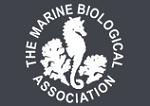APHOTOMARINE
An educational resource dedicated mainly to the photography
and diversity of marine life that can be found in coastal waters
and intertidal areas of Great Britain and Ireland by David Fenwick.

Pachymatisma johnstonia
- specimen in sea cave 1
Elephant hide sponge
Pachymatisma johnstonia
- specimen in sea cave 2
Elephant hide sponge
Pachymatisma johnstonia
- on 0.1mm division rule 1
Elephant hide sponge
Pachymatisma johnstonia
- spicules 1
Elephant hide sponge
Pachymatisma johnstonia
- spicules 2
Specimen above was found on the side wall of a very small cave, on the low tide mark of a low spring tide, at Skilly, south of Newlyn, Cornwall. 17.06.15.
Elephant hide sponge
Pachymatisma johnstonia
- washed-up / decomposing 1
Elephant hide sponge
Pachymatisma johnstonia
- washed-up / decomposing 2
Elephant hide sponge
Pachymatisma johnstonia
- washed-up / decomposing 3
Specimen above found washed-up on the lowershore near Mylor Yacht Club, Mylor Churchtown, near Falmouth, Cornwall. 28.10.10.
Species might have broken off and washed ashore as a result of oyster dredging in the area. The sponge should be a greyish or slate grey colour, therefore the colour seems to have bleached out on decomposing. The smell is as rotten as rotten can be.
APHOTOMARINE supports open source data recording and sharing for the benefit of wildlife, recorders, research, science and education. The project recommends the following websites and works with the following bodies and organisations.
A website based on Sponges of the British Isles 1992 Edition, revised and extended, 2007, by Bernard Picton, Christine Morrow & Rob van Soest. Without a shadow of a doubt the best online resource to sponges of Britain and Ireland.
The Marine Biological Association or MBA, based in Plymouth, is one of the world’s longest-running societies dedicated to promoting research into our oceans and the life they support. Since 1884 the MBA has been providing a unified, clear, independent voice on behalf of the marine biological community.It has a growing membership in over 40 countries.
The National Biodiversity Network or NBN is a charity that supports open source data sharing and recording supporting conservation, science and education. "Why do recorders need open source?". Simply because it supports the core values of wildlife recording and the free use of records and data over a very wide network that includes partners like the Natural History Museum.
The taxonomy used here is based on that of the following database, which is also used by the MBA, NHM and the NBN.
The World Register of Marine Species or WoRMS.

